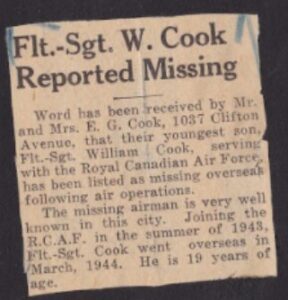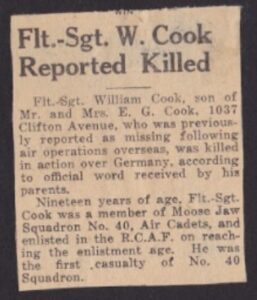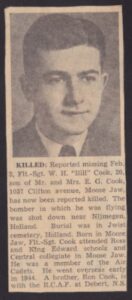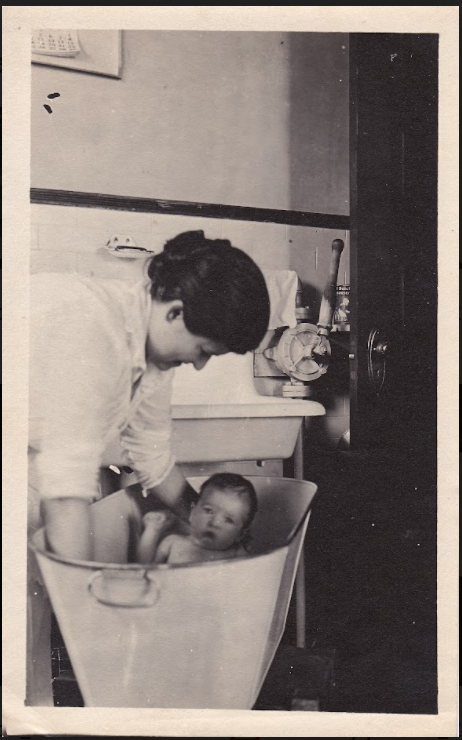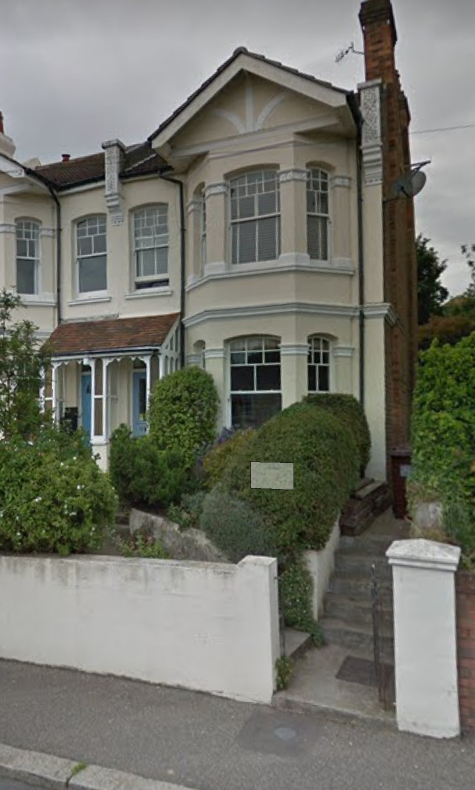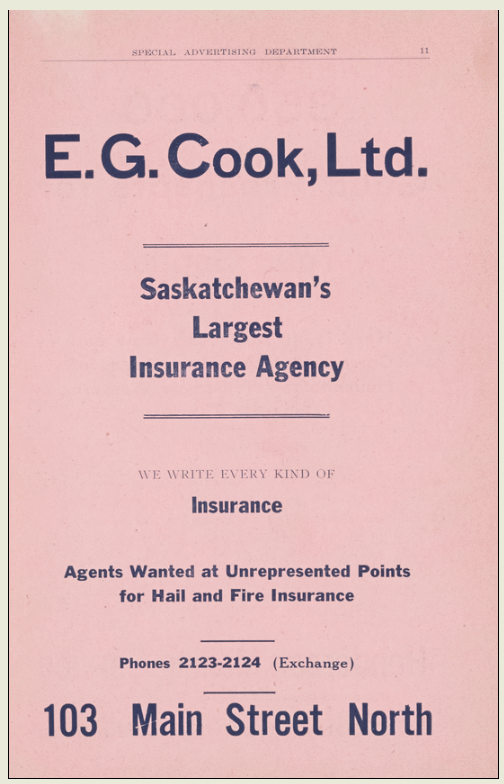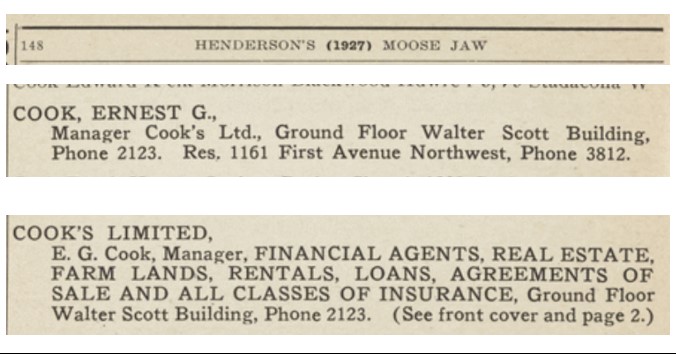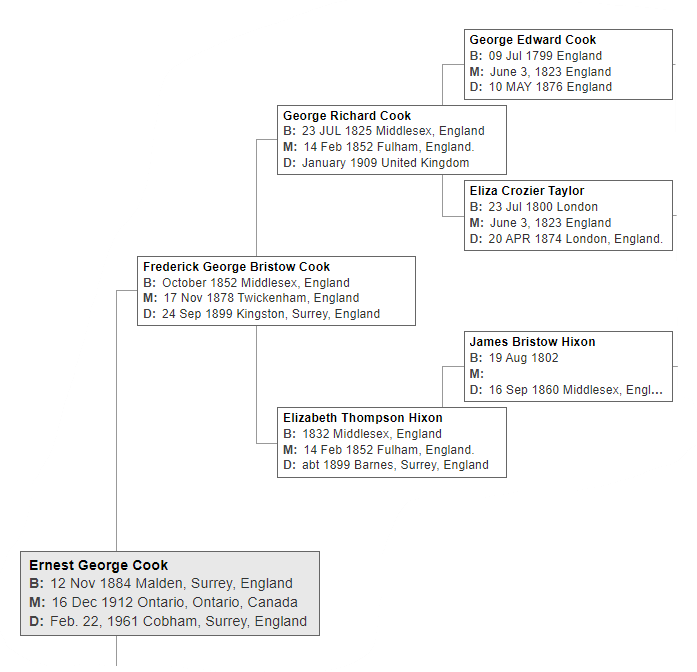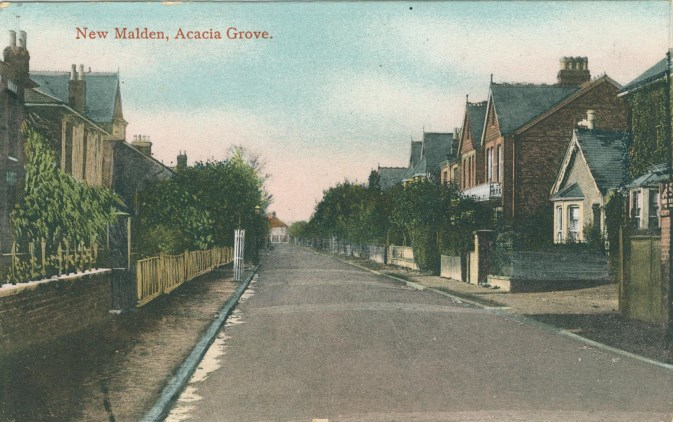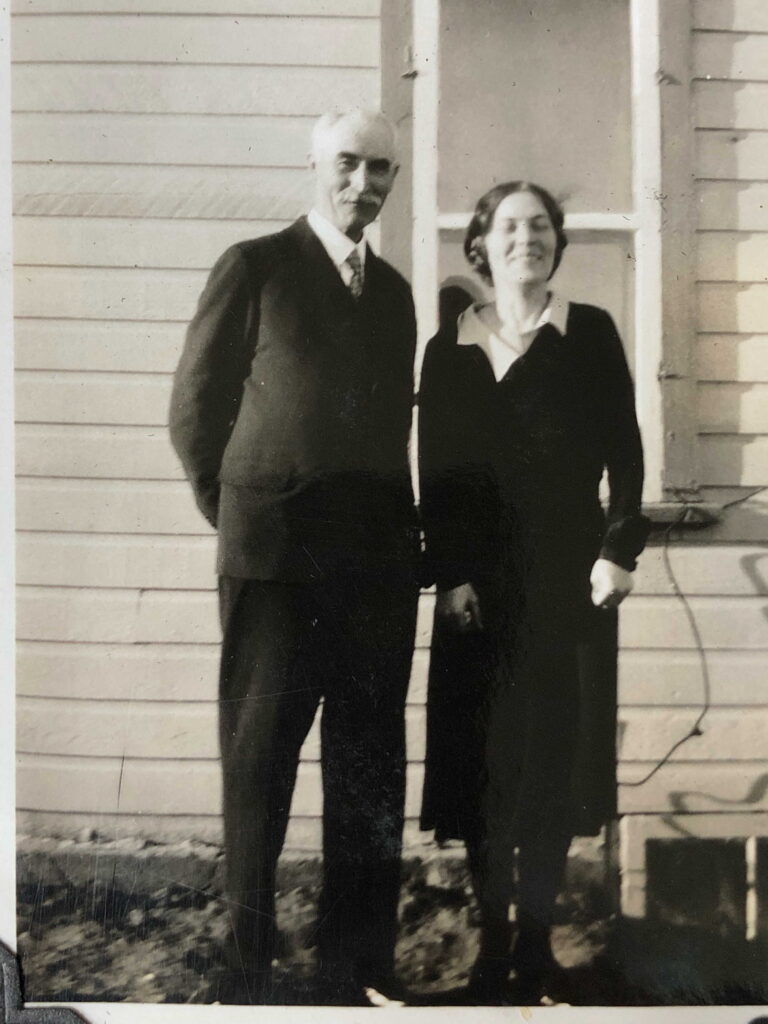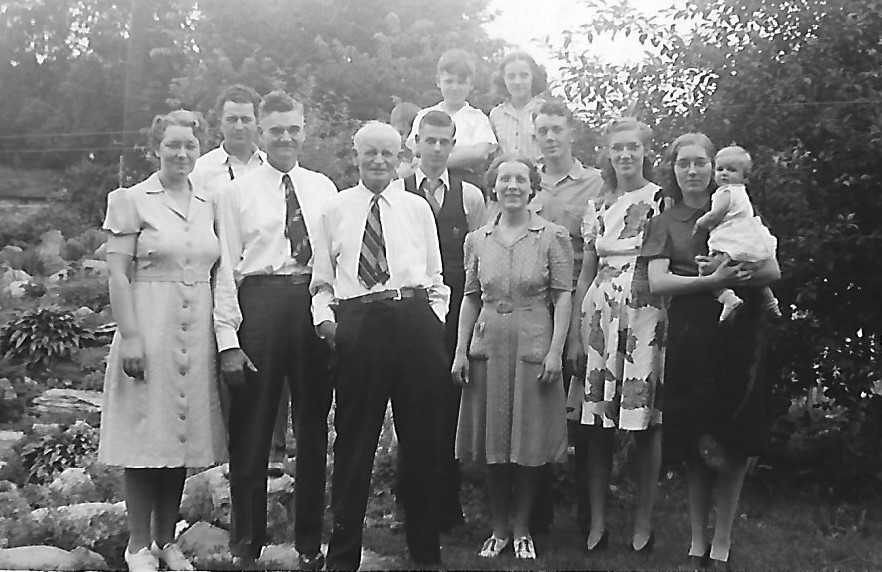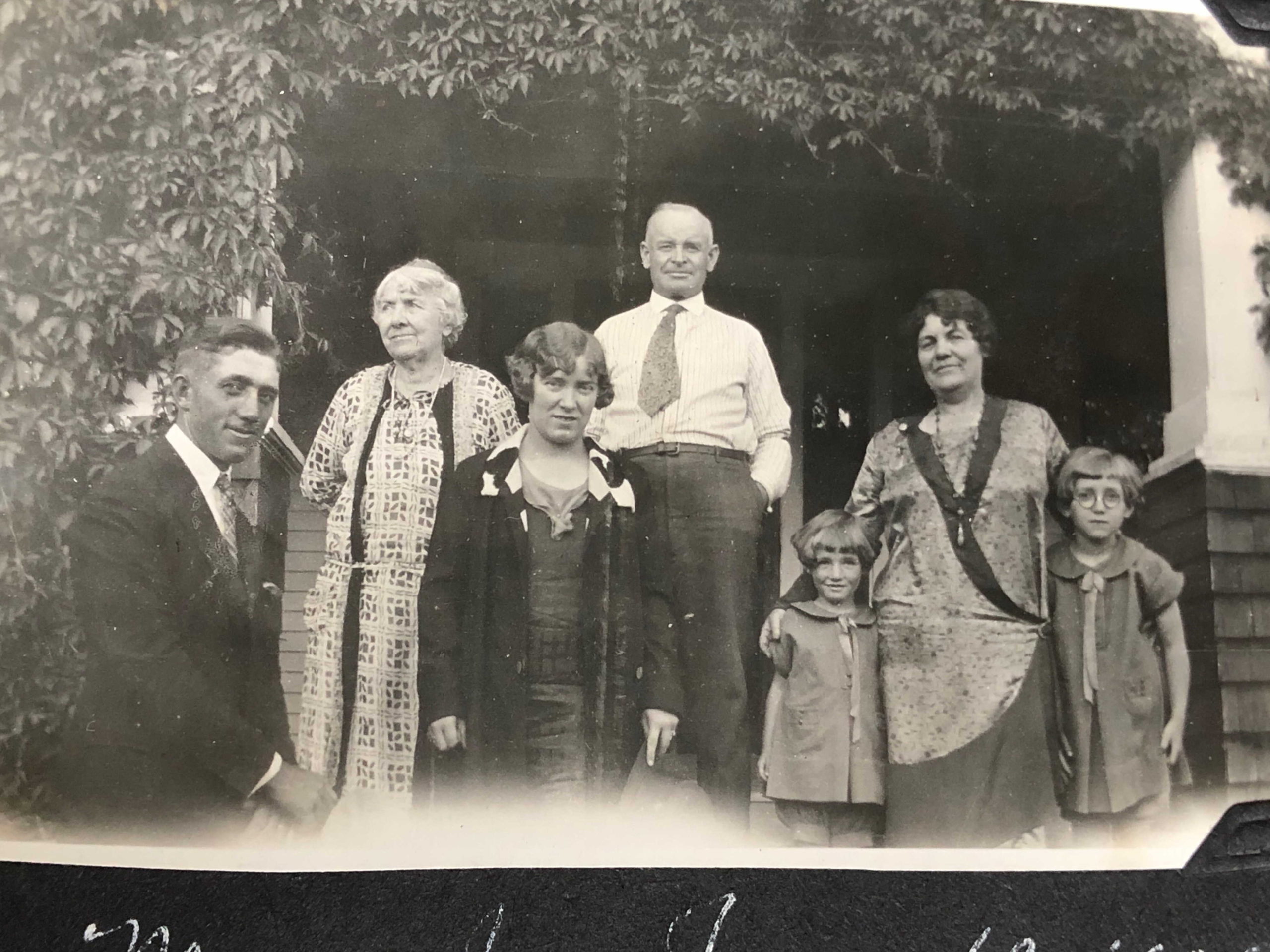Anna Cameron Murray had her Second Class teaching certificate issued in Ontario in January of 1901. When she moved to Moose Jaw in 1912, she brought her Second Class Certifcate and was able to begin teaching at King Edward School.  Shortly after she began, she had a visit from the school inspector. I am sure he must have been impressed because Anna Murray was obviously committed to becoming the best teacher she could be. She had plans to upgrade her certification, to broaden her skill levels in different subjects, and to be a life-long learner. Over the next few years, Miss Cameron moved from an interim certificate to a permanent one, then to a first class certificate and also to a high school certificate. Anna also moved frequently from one living arrangement to another. At first I couldn’t figure out why she moved so often. But now I think it was related to her constant studying to improve her qualifications as a teacher. She would not have income probably in the summers and had to give up her spot in several light-house-keeping rooms when she took courses. A second factor in Anna being on the move in Moose Jaw may have been related to the 1918 Spanish Flu epidemic that happened in the last part of the Great War and immediately after.
Shortly after she began, she had a visit from the school inspector. I am sure he must have been impressed because Anna Murray was obviously committed to becoming the best teacher she could be. She had plans to upgrade her certification, to broaden her skill levels in different subjects, and to be a life-long learner. Over the next few years, Miss Cameron moved from an interim certificate to a permanent one, then to a first class certificate and also to a high school certificate. Anna also moved frequently from one living arrangement to another. At first I couldn’t figure out why she moved so often. But now I think it was related to her constant studying to improve her qualifications as a teacher. She would not have income probably in the summers and had to give up her spot in several light-house-keeping rooms when she took courses. A second factor in Anna being on the move in Moose Jaw may have been related to the 1918 Spanish Flu epidemic that happened in the last part of the Great War and immediately after.
I believe Anna started out living with the Waugh family (Christopher and Libby, her older sister) for the first few years. She lived with them at 1005 Second Ave. NE. (Old numbering is 21 Elm Ave. ) This is a large house right on the corner of Oxford and Second Ave. E. You must imagine the trees and bushes and hedges in the sapling stage of growth. The distance to King Edward school is between 2 and 2.5 kilometers estimated a 25 to 30 minute walk. Here’s a question: Would Miss Anna Murray be able to ride from here to King Edward School on the Moose Jaw Electric Railway?
) This is a large house right on the corner of Oxford and Second Ave. E. You must imagine the trees and bushes and hedges in the sapling stage of growth. The distance to King Edward school is between 2 and 2.5 kilometers estimated a 25 to 30 minute walk. Here’s a question: Would Miss Anna Murray be able to ride from here to King Edward School on the Moose Jaw Electric Railway? 
Anna Murray is listed on Dec. 29th, 1916 as the next of kin for her brother, Walter Eddington Murray’s application for Wartime service. Her address is given as 1044 Alder.  That house is on the corner of Alder and Marlborough. Here she is about a 5 minute walk from her sister. Anna is busy taking a Physical Training Certificate and a Reading Course.
That house is on the corner of Alder and Marlborough. Here she is about a 5 minute walk from her sister. Anna is busy taking a Physical Training Certificate and a Reading Course.
 In the HD (Henderson Directory ) for 1918, Anna Murray is listed at 28 Oxford St. W. She appears to be boarding or more likely, light-housekeeping in the home of Donald Coons who was CPR Supt. of Telephones.
In the HD (Henderson Directory ) for 1918, Anna Murray is listed at 28 Oxford St. W. She appears to be boarding or more likely, light-housekeeping in the home of Donald Coons who was CPR Supt. of Telephones.

On Christmas Day in 1918, Anna might have been able to view the accident scene below from her room at 28 Oxford W. The accident took place at 5:30 pm., so perhaps Anna was over at her sister’s house for supper at the time too. The survival of James Birkenshaw would have been good news to the people on the block who had been through a rough year in 1918 with many neighbours dying from the “Spanish Flu”.

Winter driving on Oxford Street in Moose Jaw in 1918. (Archives Moose Jaw Public Library)
The young man who was driving the vehicle above had spent considerable time hospitalized here in Moose Jaw with war wounds.

James Elvin Birkenshaw had lived in Rocanville with his family of origin before he enlisted and went to France in the Great War. Despite his war wounds and then this car accident, Mr. Birkenshaw survived and lived until 1976. In 1930, he and his wife moved to Calgary and then later in life to Vancouver. He was employed as an auto mechanic. The accident in front of Anna Cameron’s rooming house did not seem to put Miss Cameron against light housekeeping in the avenues. She would live in several more places before she moved into 1037 Clifton. I have wondered as she walked over the Oxford/Clifton intersection in years after if she thought of that Christmas night accident. I think she probably didn’t know Mr. Birkenshaw but likely wondered about him as I do about them both.
In 1919, Miss Cameron began teaching at Victoria School and continued there for several years. First she lived at 1086 Alder Ave. and then for 4 years she lived on First Avenue NW: 1119, 1046, 1167, and finally, 1011 . The 1926 Census shows her at 1063 Chestnut. In 1927 on May 12, Anna was awarded a Permanent First Class Teaching certificate. Although Anna may have taken some courses by “correspondence”, in the summer of 1927 The Times-Herald reported that she would be travelling to attend Queen’s University summer school.
Then on May 8th of 1929 Anna Murray received her Bachelor of Arts degree from Queens University in Ontario. 1924-25 Victoria register In the register of pupils that she taught in 1924-25, Miss Cameron’s salary is listed as 1700 dollars per year. If she was entitled for a salary increase after her degree in 1929, the timing was probably not good. Just as the decade rolled into the 30s, Anna relocated into the YWCA and stayed there longer than she stayed anywhere in Moose Jaw with the exception of her final abode at 1037 Clifton Ave.


Anna Murray seems as proud of her residency at the YWCA as she is of her new First Class B.A. There were eight other teachers living in the YWCA in Moose Jaw when the 1931 census was taken. They ranged in age from 23 to 54. Their salaries ranged from 1100 to 1800 per year. Anna Murray, the second oldest at 51, was the highest paid teacher living there in 1931. There were young women who were stenographers, civil servants, domestic workers, dressmakers, salesladies, and one nurse. The 1931 census document makes clear that many private homes also had “Lodgers” who paid to have one of the rooms for rent. Many extra bedrooms were rented out to single persons who were not members of the family in order to add to the family finances during the 1930s. The rooms rented in the YWCA were probably quite lovely and provided more privacy and shared facilities than living in a home with a family. Anna Murray continued at the YMCA until 1935 when we find her at 1146 1st Ave NW.
In the 1936 HD, Anna is listed as the Moose Jaw president of a service club for women and children. The club was called “Quota”. Along with the business of teaching, she had responsibilities in the community. Her name appears in a report is the Winnipeg Tribune Of June 21, 1937. Three women from Moose Jaw had joined others from across the country to hold the first Canadian Quota Club District Conference.

The three women who represented Moose Jaw at the conference were: Dr. Anna E. Northup, Miss Anna C. Murray, and Miss Vivian Busby. “During the weekend, teas, luncheons and drives around the city were arranged for the visitors.”
In the next few years, Anna was back to her short term housing situations. She lived at 1132 First NW, then 1076 Alder, and then Anna retired from teaching in January of 1939 while she was living at 54 Hall St. E. I have imagined that Anna did some substitute teaching after she retired. World War 2 was on and she probably helped out in whatever ways she could.
However Anna moved again before 1944. She took advantage of her retirement to make a September trip out west. Anna listed 1206 3rd Ave NE as her “last permanent address” when she crossed the border into Idaho on her way to Vancouver to visit one of her nephews. Malcolm Ainslie Foote Waugh had married Mary-Alice Watson on April 13, 1937. Now perhaps he will have a visit from his Aunt Annie. The border crossing document makes clear that Anne was travelling by car.
Annie was described by the border guard as 5 ft 4, fair-complexioned, grey-haired, and brown-eyed. I have been hoping one of her nephews or her brother drove with her. That would be a long trip to drive alone. One guess would be Leonard Waugh who had made a previous trip to Vancouver in 1937 to be best man for his brother Malcolm.
When Anna returned from BC she must have moved again soon. She took a suite in a large home on Grafton Avenue. 1142.
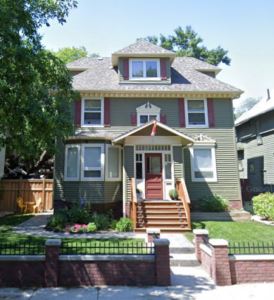
This was probably a difficult time for Anna just two days after Christmas in 1945, her only brother Walter Murray passed away. He was 63 at his death, 2 years younger than Anna. He had been living at the Legion for the last years before he died and is buried with a military gravestone.
Walter was the first of Anna’s generation of Murrays to die. Next came Alexander White, the miller from Ontario, who died there in 1950 leaving Anns’s second oldest sister, Isobel, a widow. I think Anna liked Clifton Avenue.
First she moved in to 1205 Clifton in 1953. Then in 1955 she moved into her last Moose Jaw home. There was more grief to follow Anna to her next home at 1037 Clifton. Readers, you know her new landlords well. You read about their sojourn at 1037 Clifton in an earlier post on Clifton-stories.com.
Ernest and Louisa Cook have been living in the house since 1935 when they were renters. They took ownership in 1945 when their young son, Bill, enlisted in the Air Force. Louisa Cook was born in Oshawa, Ontario in 1881. She moved to Moose Jaw in 1906 and at first lived with her married sister, Ella Brodie until her marriage in 1912 to Ernest Cook. This house on Clifton where Louise Cook was the landlady was only the third home that Louise had lived in since she left Oshawa to come west. Anna Murray, born in Ontario in 1880 was just one year older than Louise, but her life in Moose Jaw from 1912 until 1955 was very much “on the move”. For the years that Louise had experienced as a wife, a mother, a homemaker, and a landlady, Anna Cameron Murray had experienced as a sister, an aunt, a student. a teacher, and a lodger. Both Anna Cameron and Louise Cook had been involved in church groups, community service clubs, and some travelling. I like to think they became friends when Anna moved in to 1037 Clifton, but their time together was limited.
Louise Cook died on November 13th of 1955. Mr. Cook still had some lodgers here, but in 1957 he sold the house , and then after an illness that may have required care outside this home, in 1959 he travelled to England on the “Empress of France” to visit his five sisters living there. Ernest planned to stay for 5 months, but he died in England in February of 1961, and his body was returned to Moose Jaw for burial with Louise. Their story has been told in an earlier blog post. Mr. and Mrs. Cook lived in the house longer than anyone except us.
With new landlords in place, and other lodgers living here, Anna Cameron Murray settled down and lived in this house at 1037 for the rest of her life. She had years of grieving as her relatives and friends died at younger ages than she did. Christopher Waugh, the carpenter brother-in-law died on Christmas Eve in 1957. On January 7th of 1958 Mary Beatrice Murray Martin, the youngest sister of Anna died at the age of 69. She had moved with her husband to Portland, Oregon after being married in Moose Jaw on Christmas day in 1912. Then on August 5th of that same year, Isabel Murray the eldest sister (the only one who had stayed in Ontario) died leaving grown children in Michigan, Quebec, and Ontario. In 1964, Elizabeth Sarah Waugh, the sister who had moved first to Moose Jaw in 1902 died at age 88. She left a family of eight sons and one daughter plus 19 grandchildren and six great grandchildren. 

Anna Cameron Murray lived a long productive life in Moose Jaw. I am glad to have told her story here in this house history blog. I’ve been told she was a sweet and kind woman.


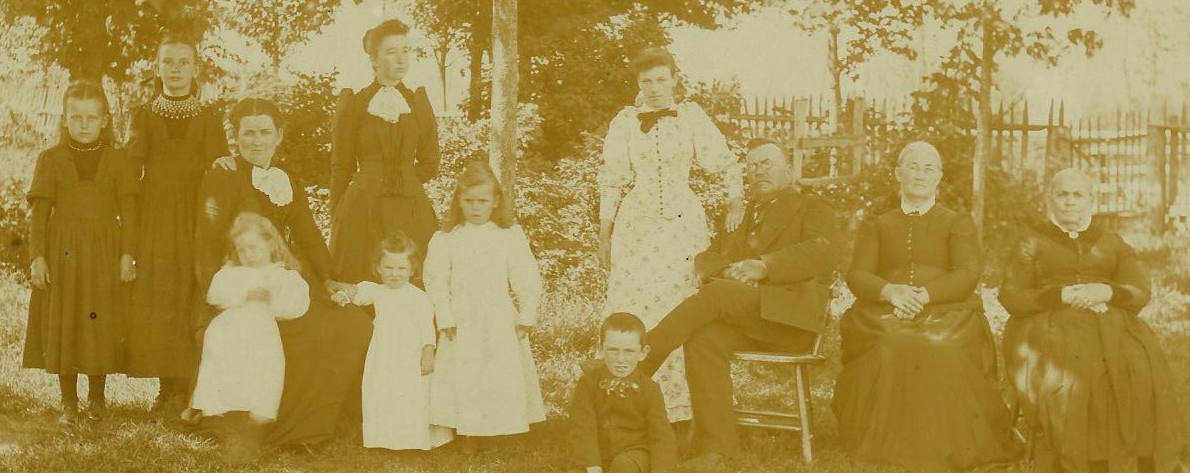







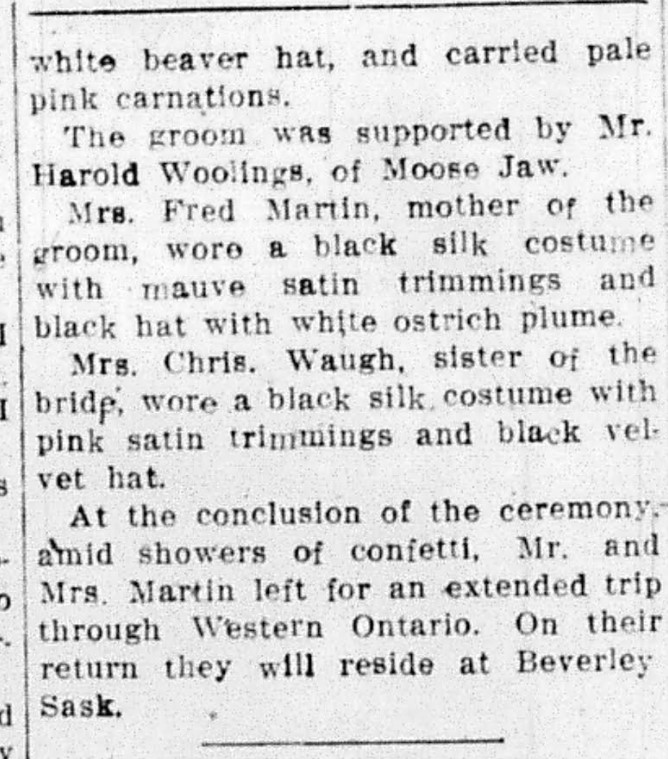









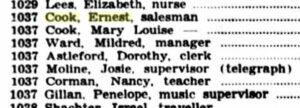






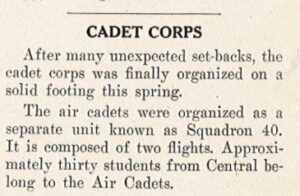 Bill continued with the Air Cadets and went to Grade 11 at Central Collegiate for 42-43. He worked part-time doing deliveries for the CPR. He served as best man for his brother Ron’s wedding on Christmas Eve. He probably listened to White Christmas, Bing Crosby’s #1 hit of 1942. His father, Ernest, went to work for the War-time Prices and Trade Board.
Bill continued with the Air Cadets and went to Grade 11 at Central Collegiate for 42-43. He worked part-time doing deliveries for the CPR. He served as best man for his brother Ron’s wedding on Christmas Eve. He probably listened to White Christmas, Bing Crosby’s #1 hit of 1942. His father, Ernest, went to work for the War-time Prices and Trade Board.



